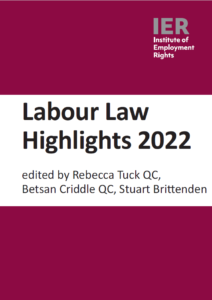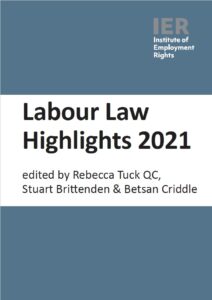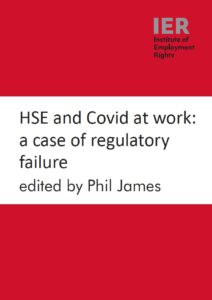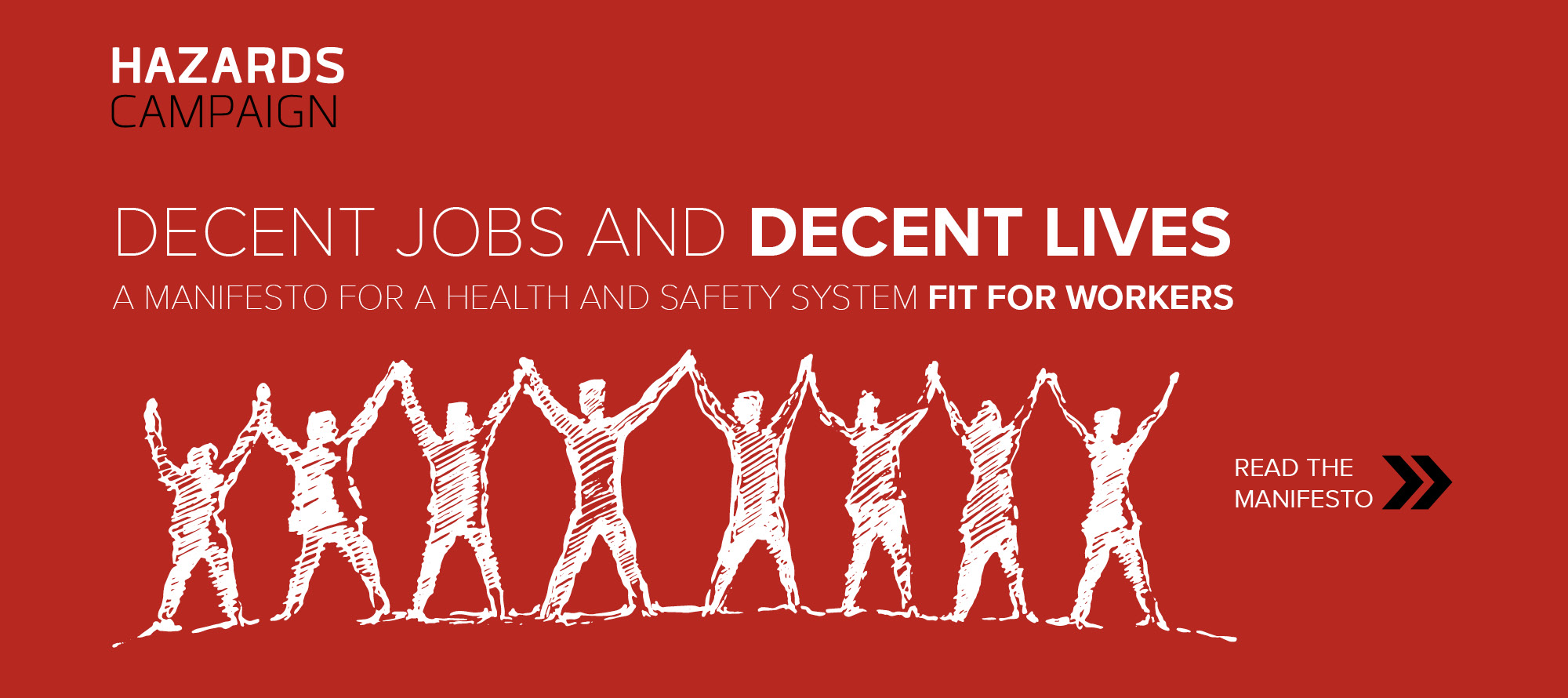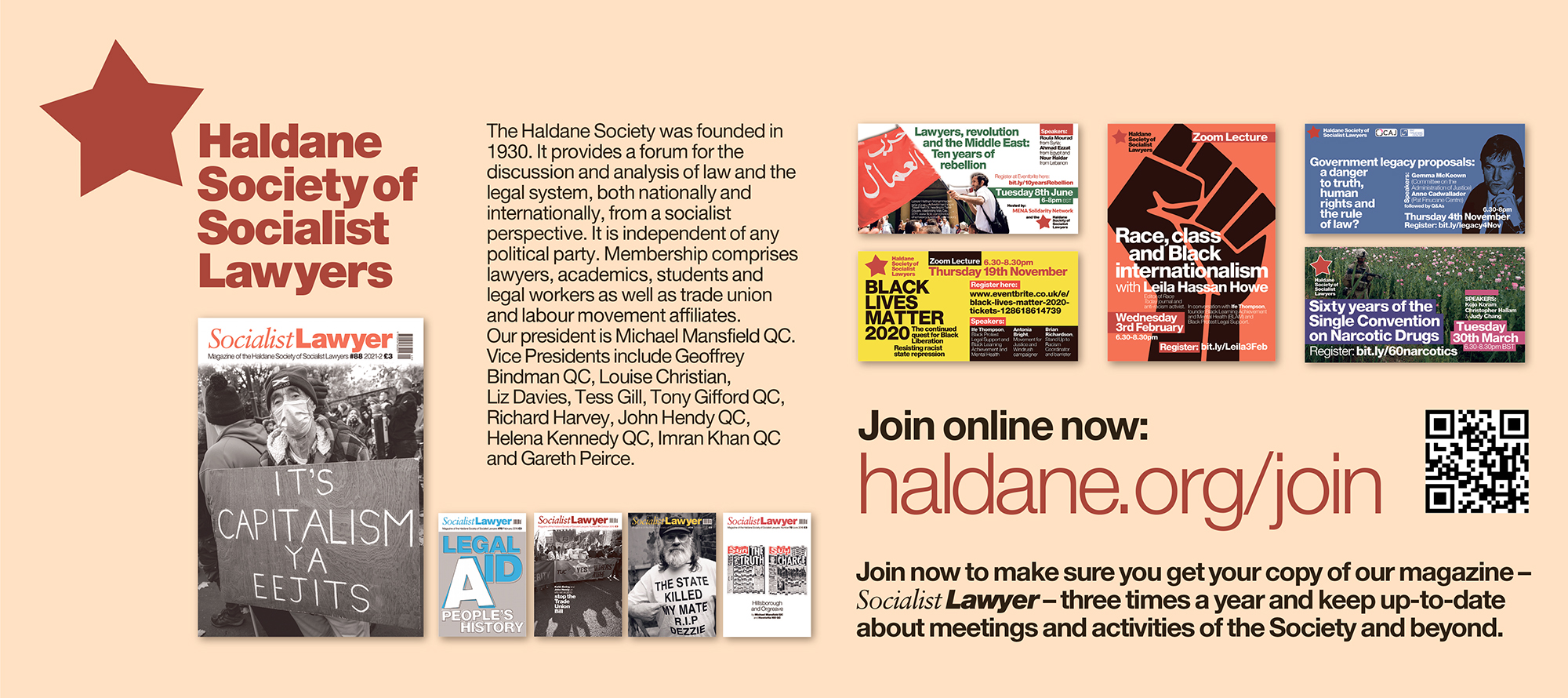Government is responsible for HSE’s “lamentable” pandemic
Howard Fidderman reviews the IER's latest publication, HSE and Covid at Work, for the Health and Safety Bulletin
The “lamentable performance of the HSE in securing compliance with workplace safety and health standards in the face of the pandemic” has meant “it is simply
not possible to view the HSE as a credible regulator”.
The claim is made in a report published by the Institute of Employment Rights (IER), a think tank for unions. The report claims that the predicament faced by the HSE is such that there is now a need for a major public inquiry into the nature and support for future regulation of occupational safety and health (OSH) in the UK, and that the consideration should include the governance, leadership and resourcing of the HSE.
The IER report is based on contributions from 13 individuals, including nine professors and a barrister. It claims that although workplaces were recognised as significant locations for virus transmission, “perversely” the risks were “simultaneously downplayed” as the government sought to address the pandemic while keeping the economy functioning. During the pandemic, “the actions of the HSE … could hardly be said to have assumed a high profile. Indeed, some of its actions could be interpreted as actually downplaying the role of work in facilitating the spread of COVID-19,” claims the report.
Absence of enforcement cost lives
The HSE’s “appalling performance” during the pandemic, insists the IER report, “has undoubtedly cost many lives and has been shown to be the consequence of the politically motivated efforts of British governments to both reduce the resources available for regulatory actions on safety and health at work, and to support the capture of the regulator by the needs of business”. The blame, emphasises the report, “rests at the door of government and in no way reflects the professionalism and commitment of HSE staff including front line inspectors”.
The report notes that workplace transmission and “outbreaks have occurred despite the existence of a very substantial body of law being in place to protect the health and safety of workers, including in relation to COVID-19”.
This has raised questions about the way in which the “body of law has been applied and, more particularly, what the HSE has been doing to ensure employer compliance with its statutory (and criminal) elements”.
In May 2020, the Prime Minister, Boris Johnson, announced that the government was providing the HSE with an extra £14 million to assist its efforts to help make workplaces “COVID-19 secure”, including through “spot checks” (see below and HSB 489 p.1 and 491 p.1).
Aside from the irony of a government that has long attacked the HSE now using it “to cover its back”, the IER report points out that the extra money amounts to just a fraction of the almost £1 billion lost to the HSE’s budget over the previous decade. Central government funding fell between 2008/09 and 2019/20 from £207.9
million to £121.3 million (cash terms) and from £270.5 million to £129.6 million (2020/21 prices). (It should be noted, however, that in addition to the figures quoted by the IER report, the HSE also generates income from fees and charges (£57.1 million in 2019/20) and other income, including from commercial activities (£38.2 million in 2019/2020), and that this revenue stream has increased over the decade).
This long-term under-resourcing is not without consequence. Over the same period, the numbers of HSE staff dropped from 3,591 to 2,371, including a fall in inspector numbers from 1,561 to 1,059. From 2010 to 2019, the number of inspections carried out by the HSE field operations directorate fell by 38%, while by 2020, enforcement notices had fallen from 2010 levels by 36% and convictions of offences by 39%. A similar situation pertains to the short-term funding for local authorities (LAs), which enforce almost half of the UK’s workplaces and have endured equally severe revenue shortfalls such that, between 2010 and 2019, there were declines in LA workplace visits (78%), enforcement notices (69%) and offences prosecuted (73%). Currently, there are 135 LAs that do not have even one FTE environmental health practitioner for health and safety.
Spot checks scratch at surface
The COVID-secure spot checks comprise up to three stages (HSB 493 p.2), starting with a 15-minute phone call of scripted questions relating to the COVID-19 guidance. Should there be potential concerns, a more detailed discussion ensues and, should this not allay the concerns, an inspector will visit the premises.
The rules governing the £14 million extra funding prevented the HSE from training new inspectors (although it would not have been able to recruit and train inspectors in so rapid a timeframe), and the spot check telephone work is outsourced to private companies, at a cost of £7.2 million. The six-month period from 1 April to 30 September 2020 saw 15,622 spot check calls, 4,938 spot check visits, 78 enforcement notices and no prosecutions. HSE inspectors also carried out 406 non-COVID-19 inspections.
The IER report notes that in the six-month period – “during a major health pandemic” – the HSE therefore managed in total just 5,344 inspections or visits to workplaces, which is 40% fewer than the corresponding period in the preceding year. “As Britain’s workplaces were the site of unprecedented danger, HSE
virtually disappeared as an enforcement presence”, the report adds. This was despite clear evidence of workplace transmission and well-publicised clusters of workplace infection.
A TUC survey during the first five days of August 2020, for example, found that only 38% of workers knew that their employers had carried out a legally required COVID-secure risk assessment, 46% believed their workplace had safe social distancing and 42% had received adequate PPE (HSB 493 p.2).
Guidance limitations
During the pandemic, the Department for Business, Energy and Industrial Strategy has produced 14 regularly updated, sector guides for employers on making workplaces “COVID-secure” (HSB 493 p.9). The IER points out that the “far from perfect” guides, produced in consultation with the HSE, have no direct legal standing –
in contrast with emergency laws restricting the movement and gathering of people (see p.5).
The guides “share two common and disturbing features: a systematic understating of the statutory obligations of employers to protect workers from contracting COVID-19, including legal consequences arising from failure to comply with them; and an almost complete absence of any mention of employee rights to representation and consultation on workplace OSH risks such as represented by COVID-19”.
The IER cites the identification by the Office for National Statistics of increased mortality for male workers in 17 occupations, including drivers of taxis, buses and coaches, security guards and “elementary workers”. For women, there were statistically higher rates among care and home care workers and sales and retail assistants.
Clusters of COVID-19 have occurred in many sectors, including councils, food processing, call centres and shops but, “disturbingly”, Public Health England (PHE) did not document many of the clusters, which has had a negative impact on the guidance for employers, while the situations in which they are required to report COVID-19 cases to the HSE are limited.
Legal obligations downplayed
HSE output includes two guidance documents and topic-based advice on the website, backed up by its non-COVID-specific guidance. The IER analysis finds that both strands “remarkably (and, arguably, misleadingly) downplay the legal obligations of employers to protect workers. In doing so, they raise serious concerns regarding the willingness and capacity of the HSE to act as a credible regulator and one that is capable of adequately protecting” workers.
The first document, Working safely during the coronavirus pandemic, is “woefully thin, comprising just six generously spaced pages of substantive comment, that are largely focused on telling the reader what they should think about while again failing to make any specific references to a piece of law”. The second, Talking with your workers about preventing coronavirus, is 22 pages but “says virtually nothing about the legal duties of employers to consult workers and their representatives or the
functions and rights of the latter”.
Although the HSE’s website links to detailed guidance on social distancing, it again fails to mention legal provisions. The website advises that where adhering to the two-metre rule is not possible, consideration should be given to additional control measures (for example, whether the activity can be stopped or non-face-to- face sitting), none of which refers to specific legislation. No legislative reference is made to personal protective equipment (PPE) in the form of masks, and the IER believes that: “The HSE appears to suggest that staff ‘facing away from each other’, even for lengthy periods of time, is an option that is invariably compatible with COSHH [the control of substances hazardous to health] and PPE requirements, as well as the general duties of the HSW Act”. This, adds the IER report, is despite the mandatory wearing of
masks in shops and on public transport.
The IER cites the view of the HSE’s chair that an employer following the sector advice of PHE (and PH Wales and PH Scotland) “will be taking reasonable practical precautions to control workplace risk”. The report notes, however, that: “This reassurance regarding legal compliance exists, however, alongside a striking lack of
reference in the guides to what the legal duties of employers are … there are no explicit references to either the HSW Act or any of its supporting regulations.” The report points to parallel Scottish guidance that “has a noticeably more pro-worker flavour and a stronger emphasis on the legal obligations of employers and HSE’s role in enforcing them,” with specific references to the legislation and against a backdrop of a Scottish government statement that supports unions making representatives available to help employers develop risk assessments in non-unionised workplaces (HSB 490 p.1).
Worker voice is marginalised
The IER report accuses the HSE of having “chosen to marginalise worker voice and representation in relation to the prevention of workplace exposures to COVID-19”. This is “not merely incompetence or oversight on the part of the regulator, but a deliberate political act, in keeping with the control of the HSE by the neoliberal
orthodoxies of the present government”.
Unions have a statutory right to appoint health and safety representatives in workplaces that recognise unions, and it is long accepted that such workplaces have far better health and safety records than non-unionised workplaces.
Yet, despite the potential of safety reps to contribute to address COVID-19 issues at work, they have been conspicuous by their “absence from the HSE’s pronouncements on workplace safety during the pandemic”.
The IER regrets that: “Nowhere in the guidance so far issued has there been any detailed mention of the rights and functions of heath and safety representatives or how these legal entitlements could be used positively and effectively to aid the workplace control of the risks arising from COVID-19.” HSE online guidance for employers, the report adds, makes no suggestions for how employers might engage with representatives and fails to mention them, beyond a passing reference in the introduction. The IER accepts that in, Talking with your workers about preventing coronavirus, the HSE does remind employers of their legal duty to consult all workers and suggests that in larger businesses, this can be through a safety representative. It then fails to mention them throughout the rest of the guidance.
(The HSE revised this advice on the day the IER launched its report. The guidance now states that employers must consult with their workers directly, or through a union or through another representative. The page also links directly to HSE advice on worker involvement and safety representatives, which does detail the statutory
requirements, although this advice is longstanding and not COVID-19 specific.)
In short, the IER report wryly observes that while the HSE has long argued for “innovative approaches to inspection and achieving compliance”, its “short-sighted political expediency and a lamentable display of weakness … has caused it to deliberately avoid engaging with a form of preventive support that is already
in place and demonstratively effective”.
Enhancing regulatory oversight
The IER report suggests that regulatory oversight could be enhanced by giving union safety representatives the rights of access to workplaces to undertake preventive work (backed by resources); enforcement rights for unions to serve improvement notices or bring private prosecutions; and the “introduction of a degree of co-enforced oversight”. In addition to union representation, there could be alliances between consumer groups, unions, regulators and other institutions.
One idea mooted in the report is the reconstitution of the HSE in line with the United Nations’ Paris Principles for National Human Rights Institutes. This would ensure
that a restructured HSE received adequate funding to be independent of government, while allowing government representatives on the body but only in an advisory capacity.
Although the HSE’s inspectorates have traditionally claimed some autonomy in relation to workforce inspection, the IER report notes that the “HSE, and its field inspectorate, are parts of the structure of the state. As such, HSE has always been obliged to conform to the bidding of state governance … Experiences of
the pandemic have therefore simply highlighted the extent of the regulatory capture of the HSE during the decades in which governance of the UK has been dominated by policies favouring interests of business and the market”.
